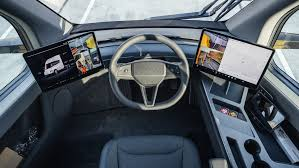In the rapidly evolving landscape of electric vehicles (EVs), 2024 promises to be a transformative year, marked by the rise of AI-driven electric vehicles. Recent reports from Bloomberg Green highlight that by the end of 2023, global EV sales surpassed 10 million units, a significant milestone indicating the growing adoption of sustainable mobility. As we step into 2024, the integration of artificial intelligence (AI) into EVs is poised to redefine how we perceive and interact with transportation. In this article, we will explore the revolutionary impact of AI on electric vehicles, the latest trends shaping the future of mobility, and how this technological synergy enhances the driving experience.
The Rise of AI in Electric Vehicles
AI and Autonomous Driving: The Perfect Match
Artificial intelligence is revolutionizing the automotive industry, particularly through its application in autonomous driving technologies. Companies like Tesla, Rivian, and Lucid Motors are at the forefront, developing sophisticated AI systems that enable vehicles to navigate complex environments with minimal human intervention. According to a report by MIT Technology Review, AI algorithms process data from cameras, radar, and lidar sensors to create a real-time, 360-degree view of the vehicle’s surroundings, ensuring safer and more efficient driving.
- Tesla’s Full Self-Driving (FSD): One of the most advanced AI systems, Tesla’s FSD, leverages deep learning to improve navigation accuracy and predictability.
- Waymo and Cruise: These companies are leading the charge in commercializing fully autonomous ride-hailing services, a trend expected to gain momentum in 2024.
AI-Enhanced Battery Management
Battery efficiency remains a critical focus in the EV industry. AI plays a pivotal role in optimizing battery performance, extending lifespan, and improving charging speeds. According to Battery University, AI algorithms can analyze usage patterns and environmental conditions to optimize charging cycles and diagnose potential issues before they arise.
- Predictive Maintenance: AI can predict when and where a battery might fail, reducing downtime and maintenance costs.
- Smart Charging Solutions: AI-driven systems can dynamically adjust charging rates based on grid demand, reducing energy costs and enhancing grid stability.
The Future of Mobility: Where EVs, AI, and Autonomous Tech Converge
Enhanced User Experience with AI
AI-driven systems are not just limited to driving; they are transforming the entire in-car experience. From personalized infotainment to advanced driver-assistance systems (ADAS), AI is making vehicles smarter and more intuitive.
- Voice-Controlled Interfaces: AI-powered voice assistants like Amazon Alexa and Google Assistant are being integrated into EVs, allowing for hands-free operation and enhanced safety.
- Adaptive Cruise Control: AI systems can adjust vehicle speed based on traffic conditions, enhancing comfort and reducing driver fatigue.
The Impact on Urban Mobility
AI-driven electric vehicles are set to revolutionize urban transportation, offering sustainable solutions to congestion and pollution challenges. Reuters Mobility reports that smart cities are investing in AI-enabled traffic management systems to optimize flow and reduce emissions.
- Shared Mobility Services: Companies like Uber and Lyft are exploring AI-driven EV fleets to offer efficient, eco-friendly transportation options.
- Last-Mile Delivery: AI-powered EVs are being used for last-mile delivery, significantly reducing the carbon footprint of logistics operations.
Practical Tips for Embracing AI-Driven EVs
How to Charge Your AI-Driven EV
Charging an AI-driven EV is becoming more convenient with the expansion of charging infrastructure. Here are some tips to make the most of your EV charging experience:
- Utilize Smart Charging Apps: Many apps, like ChargePoint and PlugShare, offer real-time data on charging station availability and pricing.
- Install Home Charging Stations: For convenience, consider installing a Level 2 charger at home, allowing for faster overnight charging.
- Leverage Off-Peak Hours: Schedule charging during off-peak hours to take advantage of lower electricity rates.
Where to Buy and What to Compare
When considering the purchase of an AI-driven EV, it’s essential to compare features and prices to make an informed decision. Here are some factors to consider:
- Range and Efficiency: Compare the range, efficiency, and charging speed of different models from brands like Hyundai, Nissan, and Ford EV.
- Autonomous Features: Evaluate the level of autonomy offered, from basic driver assistance to full self-driving capabilities.
- Software Updates: Check if the vehicle supports over-the-air software updates, ensuring your car remains equipped with the latest features and improvements.
Conclusion: Driving into the Future
As we move further into 2024, AI-driven electric vehicles are set to revolutionize the automotive landscape. The synergy between AI and EVs not only promises increased safety and efficiency but also contributes to a more sustainable future. Whether you’re a tech enthusiast or a sustainable living advocate, the advancements in AI-driven EV technology offer exciting opportunities to embrace cutting-edge mobility solutions.
Are you ready to experience the future of transportation? Explore the latest models, compare features, and consider how AI-driven electric vehicles can enhance your mobility experience. As the world shifts towards smarter and greener transportation, AI-driven EVs are undoubtedly a game-changer in 2024’s mobility trends.

